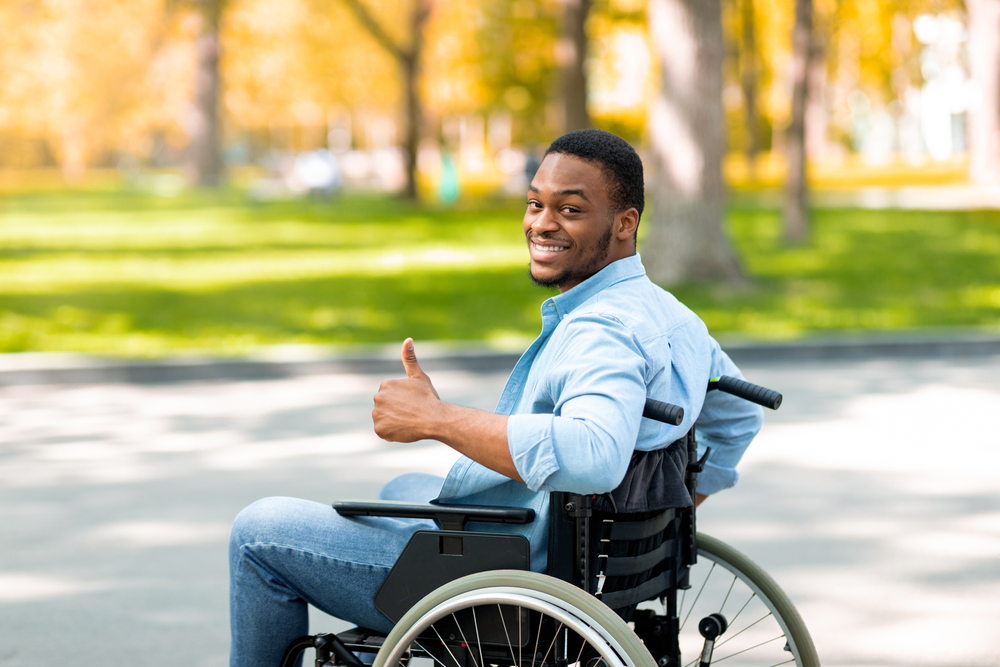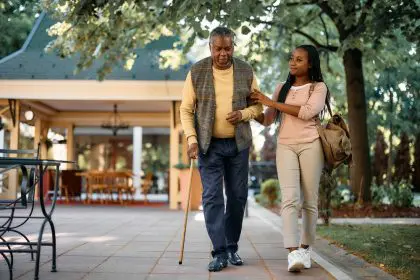A stroke can change everything in the blink of an eye. For many survivors, one of the biggest challenges is relearning how to walk. The journey from being unable to move a leg to taking independent steps can be long, grueling and filled with setbacks. But at the heart of every step is one thing: self-determination.
Understanding the challenges of walking after a stroke
When someone experiences a stroke, it can result in significant damage to the brain, often affecting the body’s motor functions. This can lead to paralysis or muscle weakness, primarily on one side of the body. For many, this makes walking an uphill battle. The muscles that were once controlled seamlessly by the brain suddenly stop responding, or if they do, it may be slow and unsteady.
Beyond the physical and mental challenges, there’s an emotional toll. Stroke survivors often find themselves grappling with feelings of frustration, sadness or even guilt. Coming to terms with these emotions is just as important as rebuilding physical strength.
The role of self-determination in stroke recovery
While therapists, doctors and supportive loved ones are crucial to the recovery process, the core driver of relearning to walk is the individual’s self-determination. It’s an internal fire — often sparked by the desire to reclaim independence, mobility and the life they once knew.
Studies have shown that stroke survivors who maintain a strong sense of self-determination are more likely to stick to their physical therapy regimens, push past pain and discomfort, and experience better recovery outcomes. Self-determination empowers them to embrace a “never give up” mentality, which is crucial when faced with slow progress or setbacks.
Taking the first steps
The journey to walking again begins with baby steps — literally and figuratively. In the initial stages of recovery, most stroke survivors start with passive exercises designed to maintain muscle tone and improve circulation. Physical therapists guide survivors through a series of movements, teaching them how to engage muscles that may have been inactive for some time.
The first time a stroke survivor tries to stand or take a step can be an emotional moment filled with a mix of excitement and fear. Standing up again after a stroke feels like facing the impossible. It requires trust in one’s body, belief in the recovery process and, most importantly, courage.
The role of consistency and persistence
Once those first steps are taken, the path forward is one of persistence. Daily exercises, stretches and routines become essential parts of a stroke survivor’s life. They need to retrain their body, often requiring hours of repetitive movements to rewire the brain and strengthen muscles.
Stroke rehabilitation is often compared to training for a marathon. Just like marathon runners push through pain, exhaustion and mental barriers, stroke survivors do the same as they relearn to walk. Some days are filled with noticeable improvements, while others may feel like progress is at a standstill.
The emotional highs and lows
Relearning to walk after a stroke is an emotional rollercoaster. There are moments of elation when goals are met — taking an unassisted step, walking a few feet or even climbing a stair. But there are also lows, like when fatigue sets in, or when the body simply refuses to cooperate.
But these challenges also foster resilience. The act of getting up after falling, of trying again and again, instills a deep sense of strength and character. Every small victory — whether it’s standing without assistance or walking across a room — is a testament to a survivor’s unwavering self-determination.
The power of community and support
While self-determination is crucial, the support of family, friends and a strong health care team can greatly impact the recovery journey. Encouraging words, helping hands and empathetic ears play significant roles in fostering a positive environment for recovery.
Peer support groups also provide a safe space for stroke survivors to share their experiences, frustrations and triumphs with others who truly understand what they’re going through. Such environments help to reduce feelings of isolation and foster a sense of community and camaraderie.
Tools and techniques to aid walking recovery
Today, advancements in health care offer a range of tools to assist stroke survivors in their quest to walk again. Physical therapists employ various techniques like strength training, balance exercises and gait training to help survivors improve their walking abilities. In some cases, technology plays a pivotal role, with devices like robotic-assisted walkers, functional electrical stimulation and virtual reality programs that provide real-time feedback and support.
Survivors are also encouraged to focus on mindfulness and breathing exercises. Stress and anxiety can hamper progress, so finding ways to stay calm, focused and positive are essential.
A story of triumph and transformation
Learning to walk again after a stroke isn’t just about the act of walking; it’s a transformation of mind, body and spirit. Every stride taken is a testament to human resilience and the power of determination. Many survivors reflect on their journey with immense pride, realizing that overcoming the challenges of a stroke has made them stronger and more appreciative of the small joys in life.
While the road to recovery can be long, the ultimate reward is a renewed sense of independence and the ability to walk confidently into the future. It’s about celebrating the victories — big and small — and knowing that each step forward is a step closer to reclaiming one’s life.
For those starting this journey, remember: progress may be slow, and there will be days when it feels like the road is endless. But with self-determination, support and the will to keep moving forward, walking again after a stroke is not just a goal — it’s an achievable triumph.
This story was created using AI technology.







